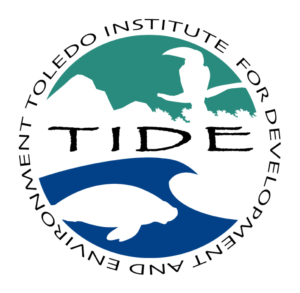TIDE's History 1990s - 2021
90s – 1997
The Idea
TIDE was established in 1997 in response to the closure of the Belize Centre for Environmental Studies (BCES). With headquarters in Belize City, BCES had been conducting ecological studies in the Toledo District since the early 1990s with a team of two native Punta Gorda staff. In 1996, BCES was preparing management plans for the proposed Port Honduras Marine Reserve (PHMR) and Payne’s Creek National Park (PCNP) when the organisation suddenly closed. Over the following months, Mr Wil Maheia, who had been working for BCES, continued to conduct a manatee project initiated by BCES. The Nature Conservancy, seeing the results of his findings and the vacuum created by the closure of BCES, stepped in and helped establish TIDE, the first Toledo-based NGO.
1999
TIDE Tours
Established
In 1999, TIDE Tours was established as a subsidiary to TIDE, as a means to promote responsible tourism in the Toledo District, offer employment opportunities and generate revenue to support our Education and Outreach program.
2000
Port Honduras Marine Reserve Established
TIDE continued to implement the work started by BCES – park management planning, education and community development. Within two years, TIDE had trained over 40 Toledo residents in ecotourism services, such as fly fishing, kayaking, birding and hospitality, as alternative livelihoods to fishing.
Working closely with the community, TIDE used biological data collected by locals to support the need for protection of marine resources. TIDE and the communities of Monkey River, Punta Negra and Punta Gorda lobbied the government to enact legal reserve status and in 2000, the Port Honduras Marine Reserve was created. TIDE was soon after granted co-management authority for the reserve in partnership with the Fisheries Department.
2001
TPPL Established through the
"Debt for Nature Swap"
"Debt for Nature Swap"
In 2001, TIDE was chosen to manage 11,000 acres of broadleaf forest under the terms of a “Debt for Nature Swap” between the governments of Belize and the USA. Since then, TIDE has increased these holdings to over 20,000 acres, which it holds in trust for the people of Belize and manages for conservation. These parcels are known as the TIDE Private Protected Lands.
2004
TIDE signs Co-Management Agreement for the
Payne's Creek National Park
In 2004, TIDE signed a co-management agreement with the Forest Department for Payne’s Creek National Park.
2006
The end of an era
At the end of 2006, Mr. Wil Maheia stepped down as executive director and was superseded by Mrs. Celia Mahung, a former TIDE board member and lecturer in education at the University of Belize. Under Celia’s leadership, TIDE introduced a number of innovative programs aimed at fostering stakeholder participation in environmental stewardship.

2007
First TIDE Freshwater Cup held
This has included the multi-award-winning TIDE Freshwater Cup in 2007 to promote environmental awareness through sports, as well as the Youth Conservation Competition, in which students give theatrical performances to raise environmental awareness.
2008
First Community Stewards trained
TIDE also started its Community Stewards program in 2008, training and equipping local resource users to help with education, outreach and law enforcement.
2011
Partnership with the Fisheries Department to pilot the
Managed Access Program
This was followed in 2011, by the Junior Community Stewards program.
In 2011, TIDE, in partnership with the Fisheries Department, introduced a two-year project to pilot Managed Access fisheries management in the Port Honduras Marine Reserve. This innovative management tool has been successful so far. Lessons learned here and at a second pilot site (Glover’s Reef Marine Reserve) are informing fisheries management throughout Belize and beyond.
And the work continues...
In just over 24 years, TIDE has grown from a handful of volunteers to around 35 full time staff today. As TIDE continues to grow in strength, it is important to remember our grassroots. It is being simultaneously connected to our local community, national networks and international science and policy that puts us in a position to facilitate pioneering community-based conservation and sustainable development initiatives.
